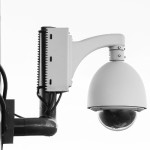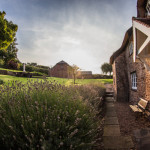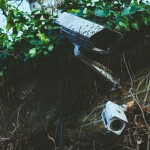PTZ Cameras: What To Look For
PTZ security cameras offer Pan, Tilt, and Zoom capabilities for more advanced and comprehensive surveillance. Because of their unique flexibility and broad coverage, PTZ cameras are often chosen to remotely monitor large areas such as parking lots or stadiums. If you are considering installing PTZ surveillance cameras for your property, here are some of the best PTZ camera features and benefits.
Large Field Of View
Depending on where you install your PTZ camera, it could have a 360 degree field of view. In addition, most cameras can be pre-programmed to provide specific viewing angles at pre-determined times. Pan and Tilt can also be pre-programmed. Thanks to this, PTZ cameras can do the job of a multi-camera installation, making them a cost-effective and smart alternative for large area surveillance and protection.
Motion Tracking
Most PTZ cameras come with built-in tracking which can be set to detect motion and track a person or object, automatically panning, tilting or zooming to follow the person or object as it moves. This feature can prove invaluable should a theft or vandalism occur on your property. When choosing a PTZ camera, full motion tracking capabilities is a must.
Night Vision
This is an important feature in nearly all security cameras, but especially in areas with poor lighting conditions. The modern, more advanced PTZ cameras can capture images in total darkness thanks to LEDs and special IR filters. The small LEDs emit infrared light, which is not visible to the human eye, but with the special IR filter, the camera sees a well lit area.
Remember that a PTZ camera that is rated for a detection range of 600 feet or more will usually be rated for a max range of 400 feet for night vision. Also, it is recommended that you set up your PTZ cameras in the same lighting conditions they will be recording in, whether dark or light.
Weatherproof
If you will be installing PTZ cameras outdoors, they must be weatherproof. Most PTZ cameras are designed to withstand harsh elements, but it is wise to double check the specifications to ensure their durability. Weatherproof PTZ cameras can be installed in very remote locations such as rooftops or the sides of tall buildings.
Powerful Zoom
PTZ security cameras have a detection ability that ranges from 150 feet (on the low end) up to 1,000 feet (on the higher end). The ability to zoom in on a person or object ranges from 12X to 36X for higher level PTZ Speed Domes. This makes them ideal for large parking lots or building tops as it allows the camera to be discreetly out of sight while still providing the option to zoom in for a better picture of what is happening.
Tamper Resistant
The best place for a PTZ camera is mounted high above the ground, which enables the best view possible, a wide 360 degree range, and added protection. As mentioned, most PTZ cameras are built tough, with rigid metal housings and high-strength polycarbonate domes that are virtually shatterproof to vandals.
Alarm Inputs
Most PTZ cameras have four alarm inputs, which connect to other important devices (ex. motion detectors, door contacts, glass break sensors). The camera can be programmed so that when activity occurs in a given area, other programmed activity is halted in order to zero in and record what is going on.
Auto Focus
The good PTZ cameras will have full range auto focus built in. This ensures clarity no matter where you pan, tilt or zoom. In addition, most have an auto adjust IR LED that quickly focuses the picture when moving the camera in areas of complete darkness. This feature is almost always missing from cheaper cameras.
Simplified Installation
Because they can cover a wider area, it may be more cost-effective to install a couple PTZ cameras to monitor your property (ex. parking lots, garages) rather than implementing several fixed security cameras. You can save on both the initial cost and installation of your system.
High Definition Options
Higher end PTZ Speed Domes are also available in IP versions, which will deliver resolutions from 720i to 1080P, and with HD-SDI technology, which provides high definition video in full 1080P resolution. The HD-SDI PTZ cameras are easier to install and maintain than IP cameras since they are installed and set up exactly the same way as standard analog cameras.
These types are only recommended when you need the highest resolution images possible. They require 2-4 times as much hard drive space as regular analog security cameras and are rather expensive for large installations.
For a great selection of PTZ security cameras and other surveillance system equipment, please visit SecurityCamExpert.com or call 888-203-6294. You can also connect with us on Facebook, Google+, Twitter, LinkedIn, and Pinterest.
Common Outdoor Security Camera Issues
Outdoor security cameras act as your first line of defense against potential burglars. The presence of outdoor security cameras alone can act as a deterrent and they can provide you with evidence should anything happen. Because they are placed outdoors, these security cameras are susceptible to possible dangers which may compromise your security system. Here are a few outdoor security camera risks and how to safeguard your security equipment.
Vandalism & Theft
Unfortunately, to cover their tracks and eliminate possible evidence, thieves may resort to vandalism and theft.
In order to protect your equipment, you will want to choose vandal-proof security cameras or CCTV cameras with metal housings or covers. These not only make it harder for them to be stolen, but they also help to keep your security camera clean.
You should also consider the placement of your security cameras. Installing outdoor security cameras where they are visible yet out of reach will help to maximize their effectiveness and reduce the risk of damage.
Lighting & Thunderstorm
Though it may seem highly unlikely, there’s still a chance your security equipment may get struck by lightning, especially in areas where thunderstorms are common.
Because metal can be highly conductive, avoid mounting your cameras to a metal. Also, be sure that your CCTV or PoE security system is grounded properly. This can minimize damage by redirecting the lightning current into the earth ground.
In addition, employing lightning surge protectors prevents voltage spikes by blocking voltage that exceeds specific thresholds and instead directing the excess into the outlet’s ground line.
Should the thunderstorm result in power outage, UPS (Uninterrupted Power Supplies) units will provide reliable backup power. They will even work if you unplug all system, cable, modem and antenna connections during a thunderstorm.
Hackers
Hacking is a big concern for network IP cameras, as hackers can possibly jam the operating device or decrypt your safety code.
In these cases, you will want to boost your network security with WPA2 (Wi-Fi Protected Access II) security protocol. You should also change your passwords frequently and make your passphrase complicated.
Firmware
In addition, updating firmware regularly for your IP security cameras is key. Some may be hesitant to perform this task as it can be inconvenient, however, these updates often contain patches for recently found loopholes or vulnerabilities that may threaten your system.
Be sure to update your firmware every few months, or check the product website to ensure you are using the latest firmware version. Also, remember to read the information carefully before upgrading.
Spider Webs or Bugs
If you employ IR security cameras outdoors and under eaves, they are likely to attract nocturnal bugs and insects that are naturally drawn to lights. Unfortunately, bugs and spider webs can compromise image quality and may even trigger false alarms from motion sensor cameras.
These issues can be combated with regular cleaning and maintenance of your outdoor security cameras. Using natural insect repellents (ex. citrus, eucalyptus, lavender, peppermint) are reported as very effective in keeping spiders away. In addition, you may use spider repellents, contact sprays, aerosol sprays and web eliminators around the camera (not directly on the lens for obvious reasons). Lastly, if you reduce the motion-detection sensibility accordingly, you will reduce false alarms.
Extreme Weather Conditions
You may worry about the performance of your security cameras if you live in areas that experience extreme and inclement weather conditions (ex. freezing winters, sweltering hot summers). Luckily, security cameras come with an IP (ingress protection) rating that determines their ability to sustain harsh weather. For example, an outdoor security camera with IP rating 66 is also known as completely water-proof (can withstand solid matter and liquid, such as dust and rainwater respectively).
Reflection Of Lights
Beware of pointing your outdoor security cameras at reflective surfaces (ex. ponds of water, glass panels, car windows) as it will cause lens glare and obstruct viewing.
To avoid this, place front door and back door security cameras outside and out of reach. Also, adjust your camera field of view to shy away from potentially reflective surfaces.
Fogging, Clouding, Or Condensation
While security cameras are often assembled to be sealed-up and air-tight to prevent moisture seeping into the lens, sudden changes in temperature may cause fogging.
This issue is common in the early morning and will sometimes go away on its own. If the problem persists, you may want to consider placing a packet of silica gel inside the housing case. Also, regularly wiping the outer lens covers with a micro-fiber cloth will help protect your cameras.
How do you maintain your outdoor surveillance system? Share your tips with us on Facebook, Google+, Twitter, LinkedIn, and Pinterest.
To shop our selection of outdoor security cameras, CCTV cameras, IP surveillance systems, and more, please visit SecurityCamExpert.com. Looking for a free quote? Call 888-203-6294 today!
Protect Your Vacant Property
Think an empty building doesn’t need maintenance or security? Think again. Unoccupied buildings tend to be more susceptible to damage and criminal activity than those filled with expensive equipment. If your property will be vacant, whether long or short term, you should secure it as soon as possible.
Main Risks For Empty Buildings
- Weather
We all know that weather can cause significant damage relatively quickly, especially for buildings in areas known for inclement weather. Damage to the exterior, including the roof and windows, can also make its way inside to cause further problems.
- Thieves
If you leave equipment or anything of value in an unsecured building, you run a high risk of theft. Even if you’ve emptied the property, thieves may still enter and steal valuable construction materials (ex. copper pines or wires).
- Vandals
Even though you may have cleared out your property, you are still at risk for vandalism. Vandals may trash your property by leaving waste, breaking things, and covering walls in graffiti.
- Trespassing
This covers a number of threats, which include squatting and illicit activities.
How To Secure Your Vacant Property
- Secure Entrances
Before vacating a property, be sure that all windows and doors are properly closed and locked. Look for gaps or damage to the frames that may allow wind, rain, or intruders to get in.
If you plan on leaving for an extended period of time, you should consider investing in stronger methods of securing doors and windows. While traditional wood boarding may be cost-effective, these have also added to the blaze of an arson attack. Investing in a metal alternative may be a better choice. You may also want to consider steel security doors which make it impossible to access your building without special equipment.
- Maintain Exteriors
Any loose objects can be stolen, used to gain entry, or used as a weapon. For example, bins, palettes and spare construction materials can quickly turn into projectiles in the wrong hands, or can be picked up by high winds in a storm. Be sure to store large objects indoors or out of sight.
Landscaping may be an afterthought, but can make a difference. You should keep pathways clear of debris, such as snow and ice in the winter, and trim grass and hedges to deter vermin from inhabiting your yard. Landscaping also makes it appear that the premise is occupied, making it less of a target.
- Check The Alarms
A security alarm is a necessity. A security alarm system can deter intruders, and, if linked to the local police, can elicit immediate response to any incidents. If you vacate your building, be sure to check your system regularly to ensure that it is functioning properly. If your system is managed by a third party, be sure to inform them of your absence.
Because a fire, whether intentional or accidental, is always possible, you should also maintain your fire alarm and sprinkler system. Be sure that pipes and sensors remain functional.
- Increase Passive Security
While dummy cameras can be a reasonable deterrent for those on a budget, operational security cameras may be a better investment. If you plan on leaving your property vacant for a longer period, you may want a real security camera to record any trespassers or criminal activity that occurs while you’re gone.
It may behoove you to make your property physically harder to access, especially if you have open spaces. Fencing and gates with proper locks and concrete barriers are effective ways to keep intruders out.
- Hire Active Security
If you will be storing valuable equipment and materials on site during your absence, you may want to hire professional guard control or even guard dogs and handlers. You can schedule the guard to check on your building at random times to keep trespassers away and to report any unusual activity.
If a building is scheduled for future renovation or demolition, registering your building for a guardianship scheme could be a more cost-effective solution. While you won’t be able to freely access your building when the guards are there, but it will safeguard against trespassers and squatters.
How do you protect your vacant property? Share your tips on Facebook, Google+, Twitter, LinkedIn, and Pinterest.
Find quality security cameras and CCTV surveillance systems when you shop at SecurityCamExpert.com! Visit us online or call 888-203-6294 to learn more about our services, including installation and support.
How Much Do Home Security Surveillance Cameras Cost?
Shopping on a budget for a security camera system? It doesn’t have to be that hard. Let SecurityCamExpert.com help you find smart solutions without breaking the bank.
Our selection of security cameras includes a variety of different styles with varying specifications. We carry security cameras starting as low as $20-$60 and reaching up to $250-$400 depending on specifications. You can pay for better quality and features, or you can get good quality for a decent price. It all depends on how much you can or are willing to spend.
For the most basic security system solutions, you can opt for dummy cameras. Our dummy cameras don’t exceed $30 so you can build a pseudo security system for cheap. Check out this SecurityMan Dummy Indoor Camera, it has a convincing look for a reasonable price.
If you want a functioning security system, dome security cameras and bullet security cameras are common types and low in price. Ours range from $40-$175, all dependent upon picture resolution, special features like night vision or audio components. Still, a great camera can be found for a cost-effective price. Our box cameras hover around the same range, but also require a separate purchase of camera lenses, which can add to overall cost.
As we move up the price ladder, our specialty security cameras like HD-SDI, high resolution, network IP and PTZ (pan/tilt/zoom) start around $100 and go up from there. It should be understood that you are paying more for performance and abilities. These cameras offer much better picture and allow you to better manipulate your viewing range. License plate capture cameras have magnificent zoom abilities along with solid resolution, so they can start north of $200.
While SecurityCamExpert.com offers individual security cameras, we also offer great packaged deals which can significantly assist those on a tight budget. Our camera packages include the basics: DVR (with & without hard drives), cameras, cables and power supplies. Our 4 camera packages range from $249 up to $549, while our 8 camera packages range from $329 up to $567. Our 16 camera packages range from $836-915, but we also offer wireless camera bundles that start as low as $139 and up. Our 4 camera IP/hybrid camera package starts at $399 and you can add more cameras or accessories from there. You can explore our packages options here.
Shop our inventory online and you’ll find security cameras or systems that fit within your budget. Would you rather get a quote based on your needs? Fill out our Free CCTV System Quote and work with our staff to create a security system within your means. Feel free to call us at 1-888-203-6294 with any questions you may have.


